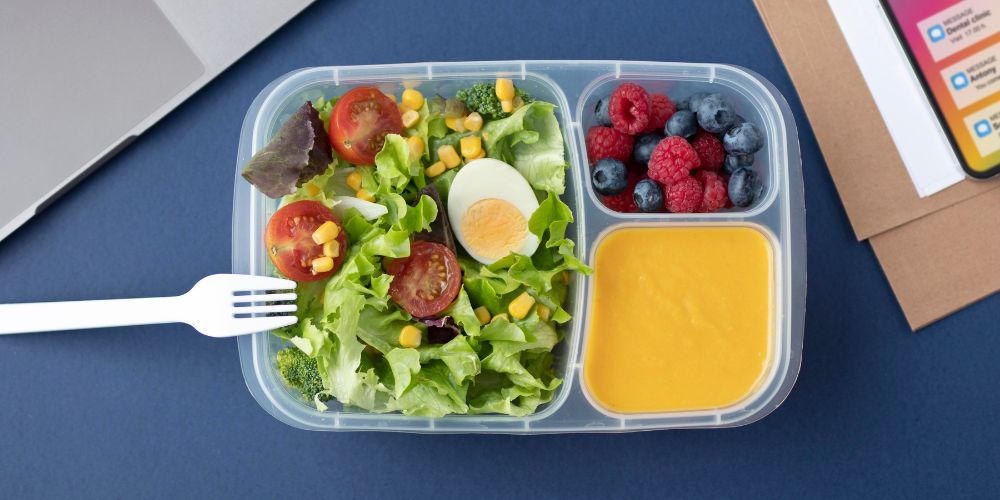
In today's fast-paced world, convenience often reigns supreme. Grabbing pre-made meals or packing leftovers in plastic containers feels like a perfectly normal, even necessary, part of our daily routines. But beneath this veneer of convenience lies a hidden cost – a massive environmental burden caused by plastic pollution.
This blog post delves into the world of sustainable food storage solutions, offering a comprehensive exploration of the issue. We'll dissect the environmental impact of plastic food containers, unveil eco-friendly alternatives, and equip you with the knowledge and strategies to make informed choices for a healthier planet.
Plastic has revolutionized our lives in countless ways. It's lightweight, durable, and readily available, making it a seemingly perfect material for countless applications. However, the very qualities that make it convenient also contribute to a major environmental crisis.
The problem lies in the disposable nature of plastic food containers. Designed for single use, they are discarded after a single meal, contributing significantly to the ever-growing mountain of plastic waste. This plastic waste takes hundreds of years to break down, often leaching harmful chemicals into the soil and water along the way. Millions of tons of plastic end up in landfills and oceans every year, creating a devastating impact on wildlife and ecosystems.
Marine animals are particularly vulnerable. They often mistake plastic debris for food, leading to entanglement, starvation, and even death. Microplastics, tiny fragments of plastic breakdown, have infiltrated the food chain, posing potential health risks to humans and animals alike.
The recycling infrastructure currently in place offers little solace. Many types of plastic have low recycling rates due to contamination or the lack of proper sorting facilities. Even recycled plastic often ends up downcycled into lower-quality products, eventually finding its way to landfills.
Unveiling Sustainable AlternativesThankfully the future isn't entirely bleak. There's a spectrum of sustainable alternatives to plastic food storage containers waiting to be embraced. Let's explore these options and understand how they can help us move towards a more sustainable future:
The most eco-friendly choice lies in the realm of reusables. These containers are designed for multiple uses, significantly reducing the amount of plastic waste generated. Here's a closer look at some popular materials for reusable containers:
Beyond these traditional options, consider exploring innovative solutions like beeswax wraps or reusable silicone bags. These alternatives offer eco-friendly replacements for plastic wrap and single-use storage bags, further reducing reliance on disposable plastics.
Compostable containers offer another sustainable alternative to plastic. These containers are made from plant-based materials like corn starch or cellulose and are designed to break down completely in a compost pile. This option shines in scenarios where reusables aren't practical, such as takeout containers or party supplies.
However, navigating the world of compostables requires a discerning eye. It's crucial to understand the difference between compostable and biodegradable containers. Biodegradable simply means something can break down naturally, but not necessarily in a home compost pile. Look for containers certified as "compostable" according to recognized standards (e.g., BPI) to ensure they will decompose safely in your backyard compost bin.
The effectiveness of compostable containers also hinges on proper infrastructure. Not all municipalities offer composting programs, so check your local options before relying heavily on these containers. Industrial composting facilities may have different requirements compared to backyard composting, so ensure the plastic containers for storage you choose are compatible with your local composting system.
While not ideal, choosing recyclable plastic containers or disposable food storage containers can still be a more sustainable choice compared to traditional plastic. Look for containers with the recycling symbol and a number (usually 1-7). This number indicates the type of plastic used, and some types (e.g., PP - polypropylene) have higher recycling rates than others. But it's crucial to keep your expectations reasonable.
Recycling isn't a perfect solution. Contamination with food scraps or other materials can render a container unrecyclable. Always check your local recycling guidelines to be sure what types of plastic are accepted in your area. Some communities might have limited capabilities for processing certain types of plastic.
Here's a crucial point to consider: recycling is an energy-intensive process. While it's certainly better than sending plastic straight to landfills, the most sustainable approach remains reducing our reliance on plastic altogether.
The fight against plastic pollution necessitates a multi-pronged approach. While individual choices matter greatly, systemic changes are equally crucial. Here are some key areas for progress:
Now that you're armed with a deeper understanding of the issue and the available alternatives, it's time to explore how you can contribute to a more sustainable future. Here are a few practical steps you can take:
The issue of plastic pollution is complex and multifaceted. However, by understanding the environmental impact of plastic food containers and embracing the various sustainable alternatives available, we can collectively make a significant difference.
Remember, every small step counts. Whether you choose to invest in a set of quality reusable containers or simply decline plastic straws at restaurants, you're contributing to a healthier planet. Let's work together to promote sustainable practices, advocate for policy changes, and support innovative solutions. By doing so, we can create a future where convenience and environmental responsibility coexist, ensuring a thriving planet for generations to come.